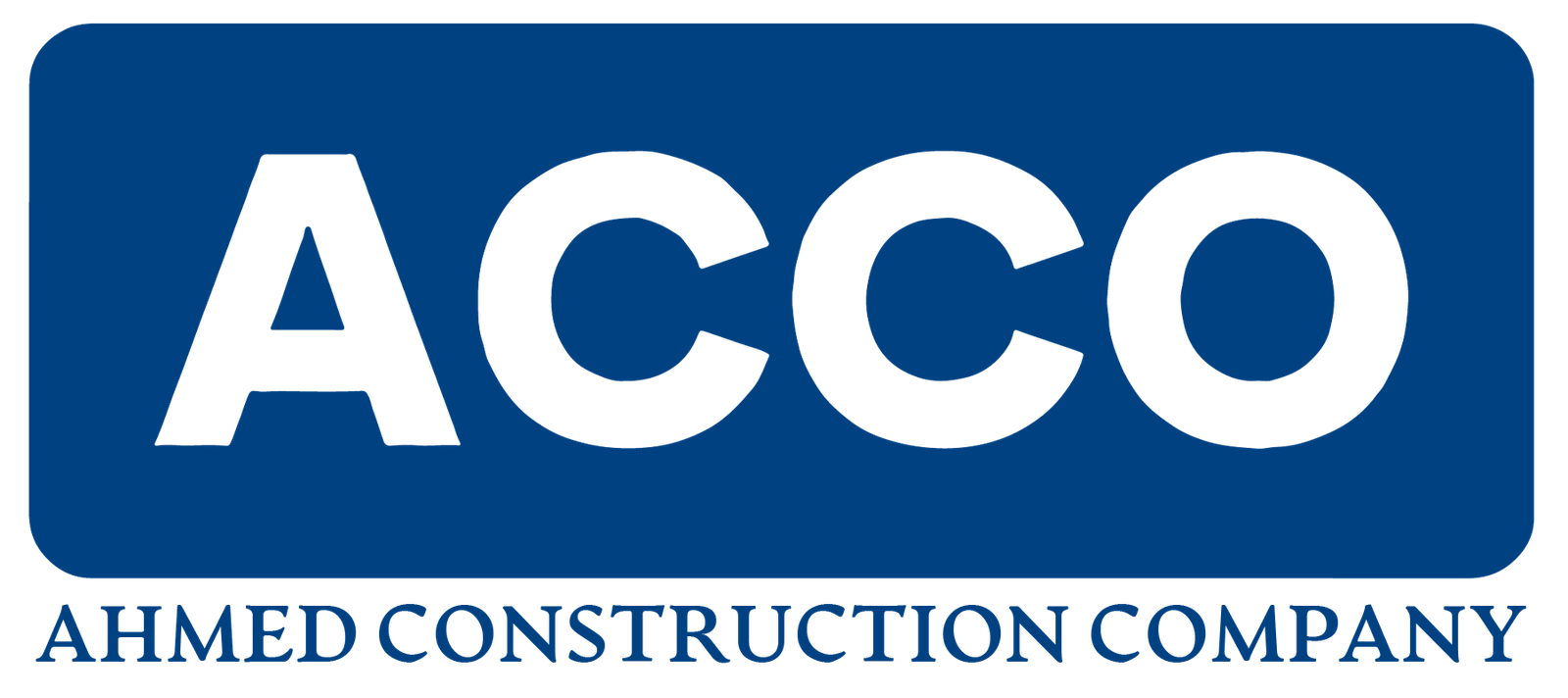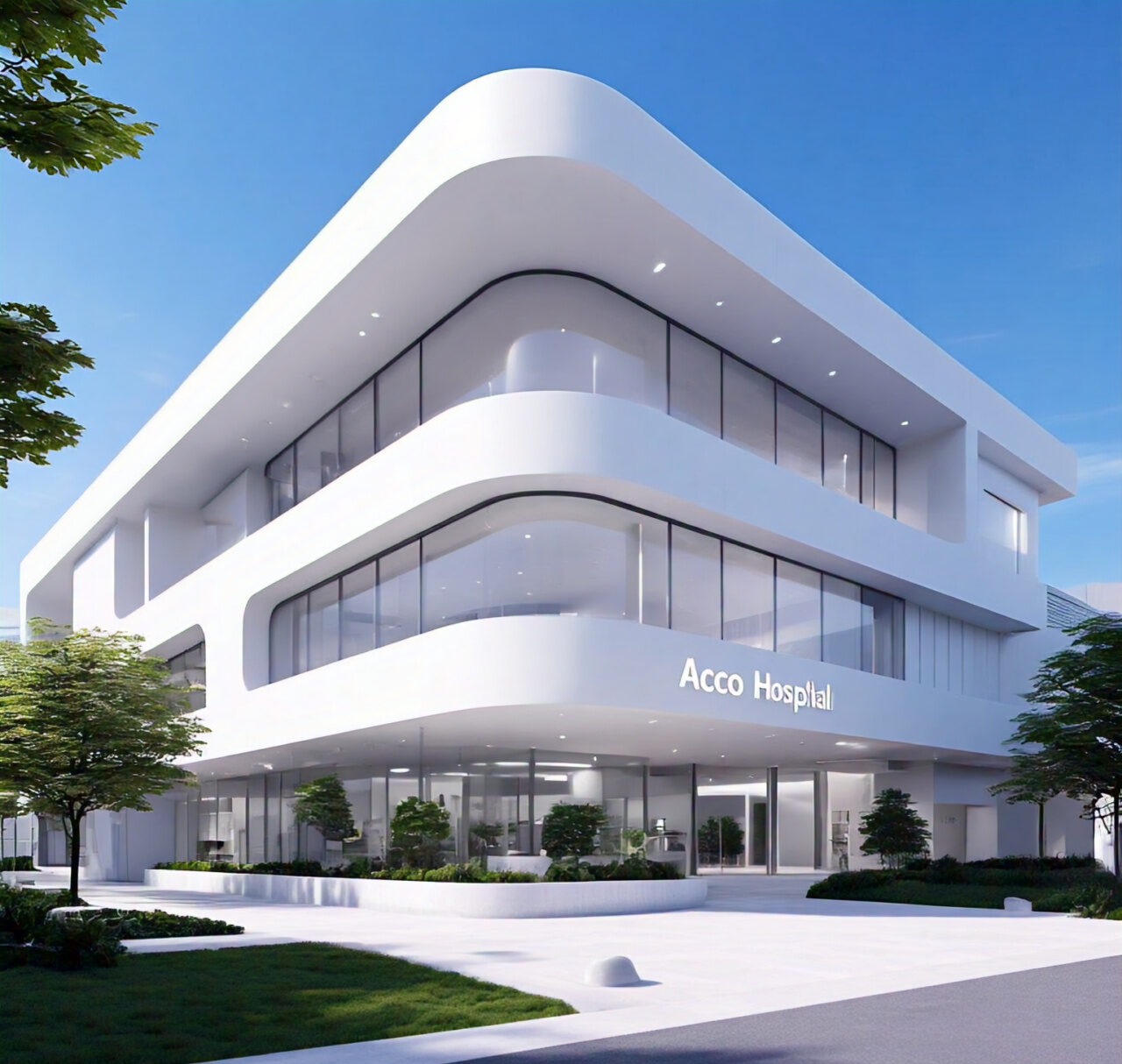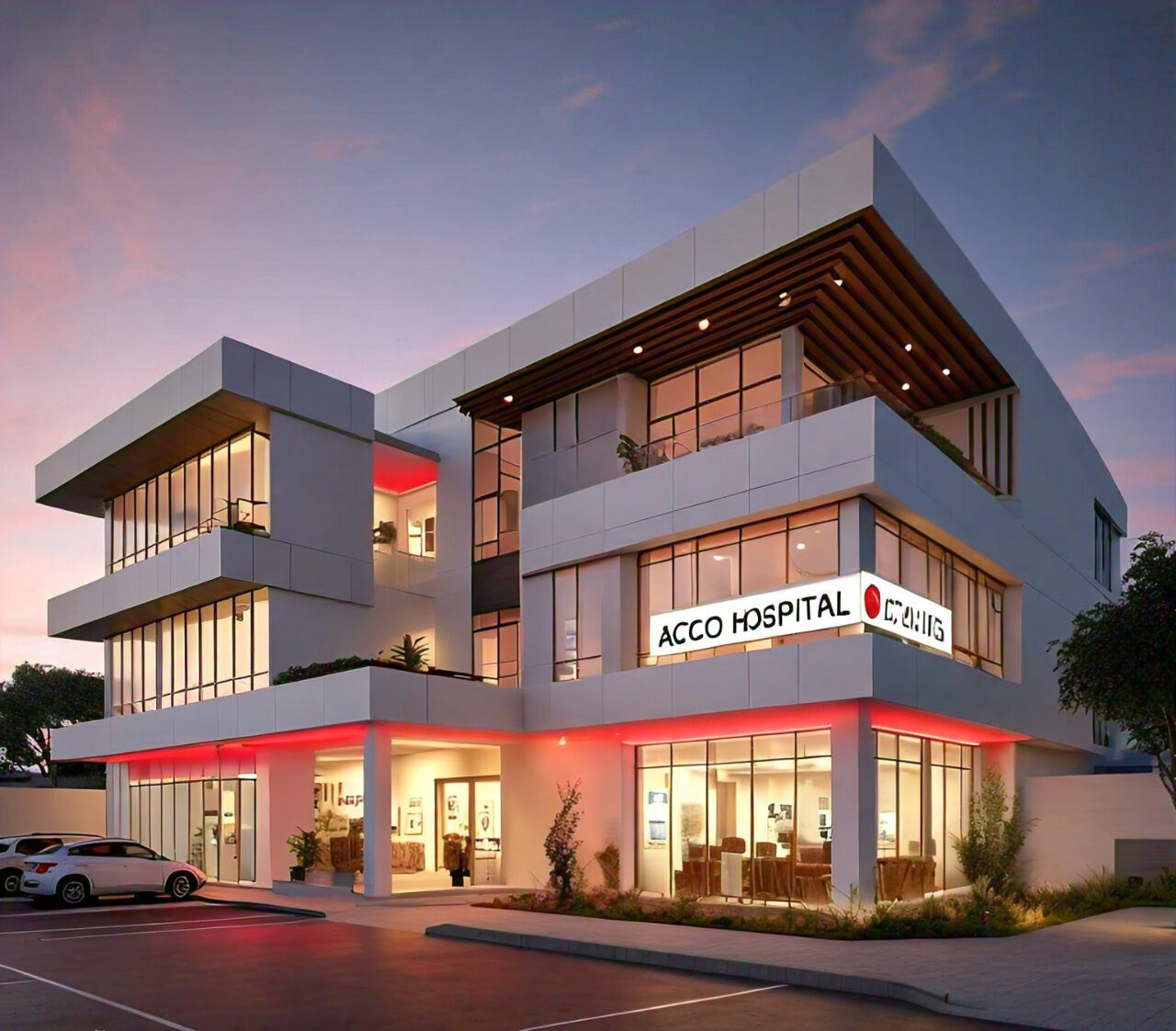
Gray Structure House Construction in Lahore – Top Guide & Pricing in 2025
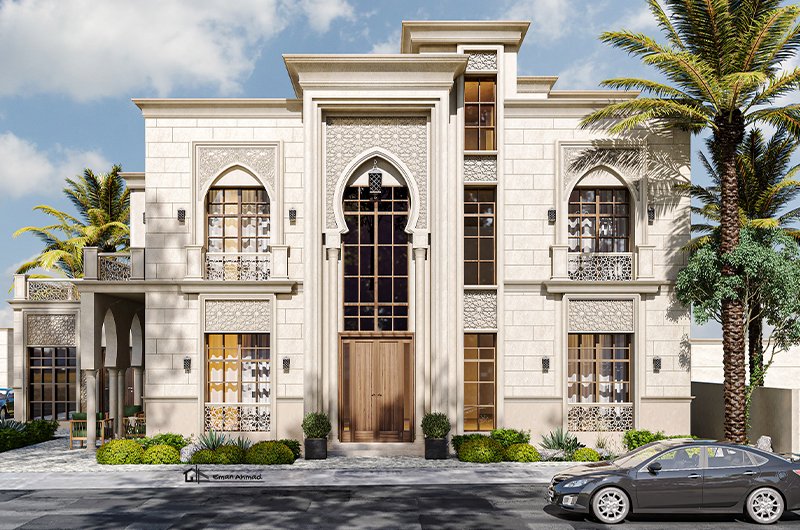
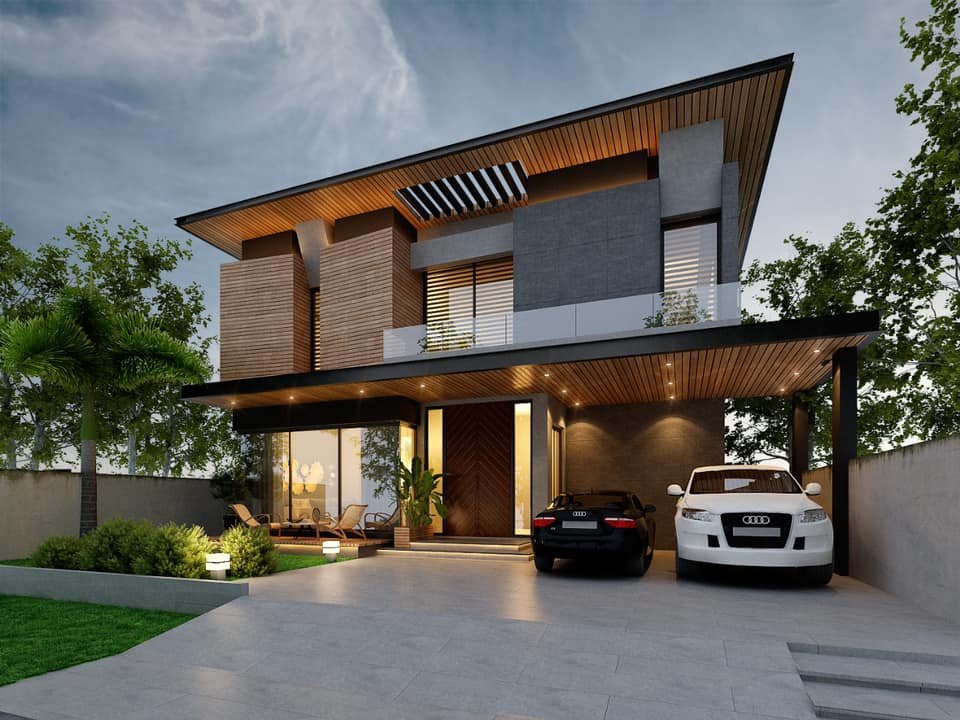
ACCO SERVICES Gray Structure House Construction in Lahore – Ultimate 2025 Guide
Meta Description: Explore ACCO SERVICES Gray Structure house construction in Lahore. Learn about costs, materials, timelines, and expert tips for a successful build in 2025.
Understanding the Concept of Gray Structure Construction
What is Gray Structure in House Building?
A gray structure refers to the bare bones of a house—think of it as the building’s skeleton. It includes all foundational elements such as the foundation, walls, roof, beams, slabs, and basic internal works like electrical conduits and plumbing pipes, but it doesn’t include finishing like paint, flooring, kitchen cabinets, or bathroom fixtures.
In Lahore, the popularity of gray structure construction has grown as clients prefer managing finishing work on their own or gradually over time. This allows for flexibility in design, budgeting, and finishing preferences.
Key Components of a Gray Structure
Here’s what typically falls under a gray structure project:
Excavation and site leveling
Foundation and base concrete (PCC)
Columns, beams, and slabs
Walls with brick masonry
Roofing with waterproofing
Basic electrical and plumbing conduits
Underground water tank and septic tank
These components form the essential framework needed to begin interior work safely and efficiently.
Why Choose Gray Structure Over Full Turnkey Construction?
There are several reasons why many homeowners in Lahore opt for gray structure construction:
Cost Control: It allows for managing a tight budget and choosing when and how to finish the house.
Customization: Owners have full freedom to select their desired finishes later.
Phased Construction: Ideal for those building their homes in phases.
Quality Oversight: Clients can personally oversee or hire experts for the finishing process.
Overview of ACCO SERVICES in Lahore
Introduction to ACCO SERVICES
ACCO SERVICES is a well-established name in the construction industry of Lahore, renowned for delivering high-quality gray structure projects. With a team of architects, engineers, and skilled labor, they provide tailored solutions for residential and commercial buildings.
Their Role in the Gray Structure Market
Specializing in gray structure projects, ACCO SERVICES helps clients lay a strong foundation—both literally and metaphorically. From site planning to execution, they manage each phase meticulously, ensuring structural strength, safety, and durability.
Reputation and Client Testimonials
ACCO SERVICES has completed numerous projects across Lahore including in prestigious areas like DHA, Bahria Town, and Model Town. Clients consistently praise their timely delivery, transparency, and engineering finesse. Their reputation is built on word-of-mouth referrals and positive online reviews.
Step-by-Step Process of Gray Structure House Construction
Site Survey and Soil Testing
The process begins with a detailed site survey and soil analysis. This is essential to determine soil bearing capacity and plan a safe, stable foundation.
Layout Planning and Excavation
Once the soil test is approved, engineers draft the layout plan and mark the construction lines on-site. Excavation follows, usually up to a depth of 3-5 feet depending on design requirements.
Foundation Work and PCC
The foundation is then constructed using lean concrete (PCC) and reinforced steel. This stage ensures the house has a strong base that supports all upcoming structural loads.
Pillars, Beams, and Slabs
Next, columns and beams are erected using quality steel and concrete mixtures. Slabs are poured with precise leveling to provide even ceiling surfaces.
Wall Construction and Roofing
Brick masonry forms the external and internal walls. ACCO follows industry best practices, ensuring uniform wall thickness and straight alignments. Afterward, roofing slabs are completed along with waterproofing to prevent leakage.
Plumbing and Electrical Conduits
Lastly, conduits for wiring, switchboards, and plumbing pipelines are embedded within the walls and floors, preparing the house for future installations.
Materials Used by ACCO SERVICES
Bricks, Cement, and Steel Quality
ACCO SERVICES uses A-grade bricks, premium quality cement (like DG or Maple Leaf), and Sarya (steel rods) from reputable suppliers to guarantee strength and longevity.
Waterproofing and Termite Treatment
Before roofing and ground slab work, waterproofing chemicals are applied to prevent seepage. Additionally, termite treatments are done to protect the wooden and concrete structures in the long run.
Electrical and Plumbing Materials in Gray Structure
Although basic, the gray structure includes PVC pipes, underground water lines, and switchboard frames to allow a smoother transition into finishing works.
Cost Breakdown for Gray Structure in Lahore (2025 Update)
Per Square Foot Cost in 2025
In 2025, the average cost for gray structure house construction in Lahore is PKR 2,200 to 2,600 per square foot, depending on material quality and design complexity.
Cost Comparison: 5 Marla, 10 Marla, and 1 Kanal
| Plot Size | Estimated Total Cost |
|---|---|
| 5 Marla | PKR 3.5 – 4.2 million |
| 10 Marla | PKR 6.8 – 7.5 million |
| 1 Kanal | PKR 12.5 – 14 million |
Labor and Material Cost Distribution
Typically, 60% of the budget goes into materials and 40% to labor. ACCO SERVICES offers bundled packages, combining both into a single, easy-to-manage contract.
Estimated Timeline for Project Completion
Timeline by House Size
5 Marla: 3 to 3.5 months
10 Marla: 4 to 5 months
1 Kanal: 6 to 7 months
Factors that Affect Construction Duration
Weather interruptions
Material supply delays
Permit and inspection approvals
Labor availability
.
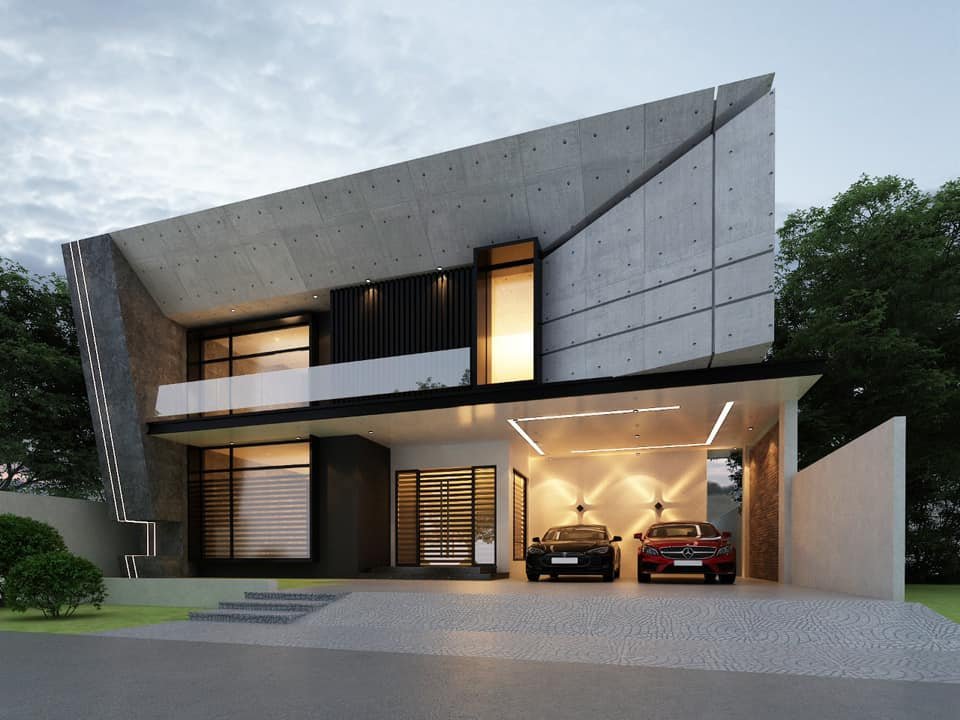
Outline of the Article
Gray Structure Cost Calculator: Comprehensive Guide
Introduction
Understanding Gray Structures
3.1 What is a Gray Structure?
3.2 Key Components of Gray StructuresImportance of Cost Calculation in Construction
4.1 Budgeting and Financial Planning
4.2 Reducing Cost OverrunsOverview of a Gray Structure Cost Calculator
5.1 Features and Functionality
5.2 How It WorksStep-by-Step Guide to Using a Gray Structure Cost Calculator
6.1 Input Parameters
6.2 Analyzing the Results
6.3 Case Study ExampleBenefits of Using a Gray Structure Cost Calculator
7.1 Time Efficiency
7.2 Accuracy and ReliabilityFactors Influencing Gray Structure Costs
8.1 Material Costs
8.2 Labor Charges
8.3 Regional VariationsTips for Optimizing Construction Costs
9.1 Material Selection
9.2 Project PlanningReal-World Applications of Gray Structure Cost Calculators
10.1 Case Studies
10.2 TestimonialsCommon Challenges and Solutions
11.1 Misestimations
11.2 Overcoming ObstaclesFuture Trends in Construction Cost Estimation
12.1 Technological Advances
12.2 Integration with BIMHow to Choose the Right Calculator for Your Project
13.1 Features to Look For
13.2 User Experience and SupportFrequently Asked Questions
Conclusion
Gray Structure Cost Calculator: Comprehensive Guide
Introduction
In today’s fast-paced construction environment, having an accurate and reliable cost estimation tool is more critical than ever. Whether you’re an architect, engineer, or contractor, the gray structure cost calculator has become an indispensable asset. This tool not only streamlines the estimation process but also enhances project budgeting, ensuring that every dollar is wisely spent. In this article, we dive deep into what a gray structure cost calculator is, why it’s essential for your projects, and how you can leverage it to optimize your construction costs. If you’re looking to revolutionize your cost estimation process, you’re in the right place.
Understanding Gray Structures
What is a Gray Structure?
A gray structure refers to the primary framework of a building that includes all the essential structural elements before the final finishes, such as cladding, interior design, and decorative elements, are added. Think of it as the skeleton of the building—the elements that provide the necessary support and shape but are not yet fully finished or “dressed up.” This includes the foundation, columns, beams, and roof structures.
Gray structures serve as the backbone for any construction project, forming the basis upon which additional layers and finishes are applied. Because of their critical nature, accurate cost calculation for these structures is paramount to avoid financial overruns and ensure project success.
Key Components of Gray Structures
When we talk about gray structures, several key components come into play:
Foundation Systems: The base upon which the entire structure is built, which could vary from slab-on-grade to deep foundations.
Structural Framing: Including columns, beams, and load-bearing walls that form the main support system.
Roof Structures: The framing of the roof, which may include trusses or other support elements.
Staircases and Core Walls: Integral for multi-story buildings, providing both structural and functional support.
Understanding these elements helps in breaking down the costs associated with each component, making it easier to calculate an overall budget accurately.
Importance of Cost Calculation in Construction
Budgeting and Financial Planning
One of the foremost reasons for using a gray structure cost calculator is budgeting. Construction projects are notorious for their complexity, and without precise cost estimates, projects can quickly spiral out of control financially. A well-calculated budget helps ensure:
Efficient Allocation of Resources: Every part of the construction process, from labor to materials, is accounted for.
Prevention of Surprises: Avoiding unforeseen expenses that might lead to delays or compromises in quality.
Investor and Stakeholder Confidence: Accurate budgeting reassures everyone involved that the project is under control.
Reducing Cost Overruns
Cost overruns are a common challenge in construction. By using a detailed cost calculator, professionals can identify potential areas where overruns might occur and take preventive measures. This proactive approach helps in:
Identifying Hidden Costs: Breaking down each component of the structure to reveal costs that might not be apparent at first glance.
Improving Planning Accuracy: Using historical data and real-time inputs to forecast expenses more accurately.
Enhancing Decision Making: Making informed choices about materials and labor, based on detailed cost analysis.
Overview of a Gray Structure Cost Calculator
Features and Functionality
A modern gray structure cost calculator is more than just a simple tool—it’s a comprehensive solution designed to meet the specific needs of the construction industry. Some of its key features include:
User-Friendly Interface: Easy input of various parameters such as material costs, labor rates, and regional variations.
Customizable Modules: Adaptable to different project scales, whether it’s a small commercial building or a large industrial complex.
Real-Time Calculations: Instantaneous updates and calculations that reflect current market trends and pricing.
Data Integration: Ability to integrate with other project management and BIM (Building Information Modeling) tools for a holistic view.
How It Works
At its core, the calculator uses a series of algorithms that take into account various factors such as:
Material Specifications: Costs based on quality, quantity, and type of materials used.
Labor Rates: Regional and project-specific labor costs.
Project Scale: Adjustments based on the size and complexity of the project.
Time Factors: Considerations for project duration which may influence labor and material costs.
These inputs are processed to provide a detailed breakdown of the total estimated cost, ensuring transparency and accuracy at every stage of the construction process.
Step-by-Step Guide to Using a Gray Structure Cost Calculator
Input Parameters
Before you can get an accurate cost estimate, it’s essential to gather all necessary data:
Material Costs: Prices for concrete, steel, and other foundational materials.
Labor Rates: Local wages, including overtime considerations if applicable.
Project Specifications: Dimensions, load requirements, and design specifics.
Regional Adjustments: Costs may vary significantly depending on geographical location.
By inputting these details, the calculator starts building a detailed financial model tailored to your project’s needs.
Analyzing the Results
Once all parameters are set, the calculator provides an estimate that breaks down:
Direct Costs: Materials, labor, and equipment.
Indirect Costs: Overhead, permits, and administrative fees.
Contingencies: A buffer for unexpected expenses.
This analysis not only provides a total cost estimate but also highlights areas where adjustments can be made to optimize the budget further.
Case Study Example
Imagine you’re planning a mid-sized commercial building. After entering all the necessary data into the calculator, you receive a comprehensive report:
Material Costs: Detailed breakdown of costs for reinforced concrete, steel reinforcements, and other necessary materials.
Labor and Equipment: Estimated based on local wage standards and machine rental rates.
Potential Savings: By comparing different suppliers and adjusting material quality, you notice potential savings of up to 15%.
This practical example demonstrates how the calculator can transform raw data into actionable insights, ensuring that your project remains financially viable.
Benefits of Using a Gray Structure Cost Calculator
Time Efficiency
One of the standout benefits of using a gray structure cost calculator is the significant reduction in time required for manual estimates. Instead of spending days or weeks crunching numbers:
Instantaneous Feedback: Get immediate estimates as you input data.
Streamlined Processes: Automate repetitive calculations, freeing up time for strategic decision-making.
Project Acceleration: Faster estimates lead to quicker project approvals and execution.
Accuracy and Reliability
Manual calculations are prone to errors, which can have disastrous consequences in construction. A digital calculator:
Minimizes Human Error: Automated algorithms ensure that all calculations are precise.
Provides Consistency: Standardizes the estimation process across different projects.
Boosts Confidence: With reliable data at your fingertips, you can approach budgeting and planning with confidence.
Factors Influencing Gray Structure Costs
Material Costs
Materials form the backbone of any gray structure, and their prices can fluctuate due to:
Market Demand: High demand can drive up prices significantly.
Quality Variations: Different grades of materials can affect the overall cost.
Supply Chain Issues: Delays or shortages can lead to higher costs.
Keeping a close eye on material costs helps in adjusting your estimates and planning for contingencies.
Labor Charges
Labor is another critical component. Factors affecting labor charges include:
Regional Wage Variations: Costs vary widely depending on location.
Skill Levels: Highly skilled labor might come at a premium.
Project Duration: Longer projects might incur higher cumulative labor costs.
A thorough understanding of these factors allows for more precise budgeting.
Regional Variations
Costs in construction are not uniform across regions. Considerations include:
Local Regulations: Permitting fees and compliance costs can vary.
Transportation and Logistics: Remote areas might incur higher costs for materials.
Economic Conditions: Regional economic health can affect both material and labor costs.
By factoring in regional differences, the calculator can provide a more accurate and tailored cost estimate.
Tips for Optimizing Construction Costs
Material Selection
Choosing the right materials can significantly impact your budget:
Evaluate Alternatives: Compare different materials that offer similar performance.
Consider Longevity: Sometimes a higher upfront cost pays off in the long run with reduced maintenance.
Negotiate with Suppliers: Building strong relationships with suppliers can lead to cost savings.
Smart material selection is key to balancing quality and cost efficiency.
Project Planning
Effective planning is essential:
Detailed Blueprints: Invest time in creating detailed designs that minimize changes during construction.
Schedule Management: Avoid delays by planning for contingencies.
Regular Reviews: Continually assess costs throughout the project to catch discrepancies early.
A well-structured plan not only saves time but also significantly reduces overall expenses.
Real-World Applications of Gray Structure Cost Calculators
Case Studies
Numerous construction projects have benefited from the use of cost calculators. For instance:
Commercial Complexes: Large-scale projects have used these tools to fine-tune budgets and identify savings in bulk material procurement.
Residential Developments: Home builders have leveraged the calculator to offer transparent pricing to buyers, building trust and reducing disputes.
These case studies demonstrate the practical utility of the calculator in real-world scenarios.
Testimonials
Builders and contractors have shared positive feedback:
“Using the gray structure cost calculator transformed our budgeting process. We now have a clearer picture of where every dollar goes.”
“It’s like having a financial advisor dedicated to our construction projects. The accuracy is impressive.”
Such testimonials reinforce the value and reliability of this digital tool.
Common Challenges and Solutions
Misestimations
Even with advanced tools, misestimations can occur:
Incomplete Data: Missing or outdated inputs can skew results.
Unexpected Variables: Natural disasters or sudden market shifts may affect cost predictions.
Human Oversight: Errors in data entry can lead to discrepancies.
Overcoming Obstacles
To mitigate these challenges:
Regular Updates: Keep your data current to reflect market changes.
Double-Check Entries: Verify all inputs before finalizing your estimates.
Include Contingency Funds: Allocate a percentage of your budget for unforeseen expenses.
By addressing these challenges proactively, you can enhance the accuracy of your cost estimates.
Future Trends in Construction Cost Estimation
Technological Advances
The field of construction is continually evolving. Here are some trends to watch:
Artificial Intelligence: AI is beginning to play a major role in predictive cost analysis, learning from historical data to provide more accurate estimates.
Big Data Analytics: Access to large datasets helps refine cost predictions by identifying trends and anomalies.
Mobile Integration: Cost calculators are becoming more accessible via mobile devices, allowing for real-time updates on the job site.
Integration with BIM
Building Information Modeling (BIM) is revolutionizing construction management:
Seamless Data Flow: Integration with BIM allows for more accurate cost calculations by pulling real-time data directly from the project model.
Enhanced Collaboration: Teams can work together more effectively when everyone has access to the same, updated information.
Future-Proofing Projects: As BIM technology evolves, so will the capabilities of cost calculators, making them even more indispensable.
How to Choose the Right Calculator for Your Project
Features to Look For
When selecting a gray structure cost calculator, consider the following:
User Interface: A clean, intuitive design minimizes learning curves.
Customization Options: The tool should be adaptable to the specific needs of your project.
Integration Capabilities: Look for compatibility with other project management software and BIM tools.
Real-Time Updates: Ensure that the calculator provides timely data reflective of current market conditions.
User Experience and Support
A tool is only as good as the support behind it:
Customer Support: Reliable assistance can make a significant difference, especially during complex projects.
User Reviews: Check testimonials and case studies to gauge user satisfaction.
Training Resources: Comprehensive guides and tutorials help you maximize the tool’s potential.
Frequently Asked Questions
What exactly is a gray structure?
A gray structure is the basic framework of a building, including the foundation, columns, beams, and roof structures before final finishes are applied. It forms the backbone of the construction.How does a gray structure cost calculator work?
The calculator uses input parameters such as material costs, labor rates, and project specifications to provide an accurate estimate of the total cost. It factors in direct costs, indirect costs, and contingencies for a comprehensive overview.Can the calculator help reduce cost overruns?
Yes, by providing a detailed breakdown of expenses and identifying potential hidden costs, the calculator helps in planning better and reducing unexpected overruns during construction.What factors can affect the accuracy of the calculator?
The accuracy depends on the quality of the data entered. Incomplete or outdated information, regional variations, and sudden market changes can affect the estimate. Regular updates and verification are key.Is the gray structure cost calculator suitable for all types of projects?
Most modern calculators are highly customizable and can be adapted for residential, commercial, or industrial projects. Always choose a tool that best fits your project’s unique requirements.
Conclusion
The gray structure cost calculator stands as a revolutionary tool in the construction industry. It simplifies the complex task of cost estimation, making it accessible, accurate, and highly efficient. Whether you’re looking to optimize your project budget or simply seeking to improve your financial planning, this tool is indispensable. With features ranging from real-time data integration to comprehensive breakdowns of every cost factor, it empowers professionals to make informed decisions and manage resources effectively.
For anyone involved in construction—from small-scale residential builders to large commercial developers—the benefits of a gray structure cost calculator are clear. By adopting this tool, you can mitigate risks, streamline planning, and ultimately build more efficiently. In an industry where every penny counts, leveraging technology for precise cost estimation is not just an advantage—it’s a necessity.
For more information or personalized assistance, feel free to reach out via our contact details at www.acco.com.pk, email info@acco.com.pk, or call Ph.03228000190.
A grey structure, sometimes called the building’s framework or skeleton, refers to the primary, unfinished stage of construction. This phase lays down all the fundamental components that provide structural support before any finishing touches are applied. Here’s what is typically included:
Foundation: Excavation, reinforcement, and the pouring of concrete to create a strong base.
Load-Bearing Walls: Constructed using bricks, concrete blocks, or similar materials to support the weight of the building.
Structural Framework: Columns, beams, and slabs (or trusses) that form the main support system.
Roof Structure: The basic framework for the roof, often left as a simple slab or truss system without final coverings.
Basic Openings: Spaces for windows and doors are framed, though the actual installations come later.
Rough Utility Installations: Preliminary electrical conduits, plumbing lines, and sometimes ductwork are embedded to support later installation of systems.
Additional Elements: In many cases, basic elements such as cement plaster on walls, water tanks (both underground and roof-mounted), and septic systems are also included.
Finishing works like final plastering, painting, tiling, and decorative features are not part of the grey structure—they come in the subsequent phases of construction.
For more information, feel free to contact us at:
Website: www.acco.com.pk
Email: info@acco.com.pk
Phone: Ph.03228000190
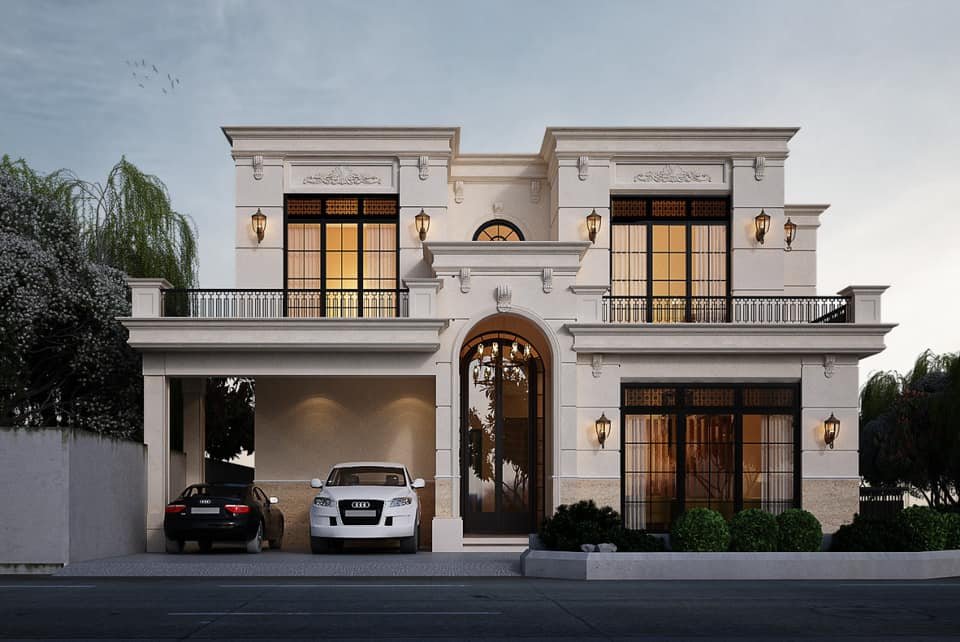
Gray Structure Cost Calculator, Rate, Meaning in Urdu, Agreement, Material List & Per Square Foot Price
Outline of the Article
H1: Introduction to Gray Structure in House Construction
H2: What is a Gray Structure?
H3: Basic Definition
H3: Components of a Gray Structure
H2: Grey Structure House Meaning in Urdu
H3: اردو میں گرے سٹرکچر کا مطلب
H3: پاکستان میں عام فہم میں کیا سمجھا جاتا ہے؟
H1: Understanding the Cost of Gray Structure
H2: Gray Structure Cost Calculator
H3: What is a Gray Structure Cost Calculator?
H3: How to Use It Effectively
H2: Gray Structure Rate in Pakistan
H3: Average Market Rates in 2025
H3: Factors That Affect Rates
H2: Gray Structure Cost Per Square Foot
H3: Costing by Area (5 Marla, 10 Marla, 1 Kanal)
H3: Urban vs Rural Cost Differences
H1: Gray Structure Agreement Details
H2: What to Include in a Gray Structure Agreement?
H3: Legal Clauses
H3: Timeline and Milestones
H2: Sample Gray Structure Agreement Format
H1: Grey Structure Material List
H2: Essential Materials Required
H3: Cement, Bricks, Sand, Crush, Steel, Plumbing
H3: Electrical and Roofing Essentials
H2: Material Quality and Quantity Tips
H1: Final Thoughts and Smart Tips
H2: How to Save Money on Gray Structure
H2: Hiring the Right Contractor
H1: Conclusion
H1: FAQs
Gray Structure Cost Calculator, Rate, Meaning in Urdu, Agreement, Material List & Per Square Foot Price
Introduction to Gray Structure in House Construction
Building a house is a dream project, but knowing the technical side of it is super important—especially when it comes to the gray structure. This phase is the backbone of your entire construction journey. Whether you’re planning a 5 Marla or a 1 Kanal home, this guide will walk you through every key aspect of gray structure—from costs to agreements and materials.
What is a Gray Structure?
Basic Definition
In simple terms, a gray structure is the skeleton of your house. It includes the foundation, walls, roof, and basic plumbing and electric piping—but no finishes like tiles, paint, doors, or windows.
Components of a Gray Structure
Excavation and Foundation
RCC Structure (Beams, Columns)
Brick Masonry
Roofing (Slab)
Internal Plumbing (Pipes only)
Electrical Conduits (Pipe fitting only)
Plaster Work (First coat)
Grey Structure House Meaning in Urdu
اردو میں گرے سٹرکچر کا مطلب
گریے سٹرکچر کا مطلب ہے وہ ابتدائی ڈھانچہ جو کسی گھر کی بنیاد بناتا ہے۔ اس میں صرف تعمیراتی کام شامل ہوتا ہے جیسے دیواریں، چھت، سیمنٹ، اینٹیں، اور ابتدائی پلمبنگ و الیکٹرک کنڈٹ۔
پاکستان میں عام فہم میں کیا سمجھا جاتا ہے؟
پاکستان میں جب کوئی “گریے سٹرکچر” کہتا ہے، تو اس کا مطلب ہے وہ گھر جس میں ابھی تک کوئی فینشنگ کا کام (پینٹ، فرش، دروازے وغیرہ) نہیں ہوا۔
Gray Structure Cost Calculator
What is a Gray Structure Cost Calculator?
A gray structure cost calculator is a digital tool or spreadsheet that helps you estimate how much your project will cost based on square footage, material quality, and labor charges.
How to Use It Effectively
Enter total covered area (in square feet).
Choose material grade (Standard/Premium).
Include location to adjust labor cost.
Get an approximate estimate instantly.
You can even find a calculator on www.acco.com.pk or contact them at 03228000190 for assistance.
Gray Structure Rate in Pakistan
Average Market Rates in 2025
In 2025, the average gray structure rate in Pakistan ranges from:
Rs. 3,200 to Rs. 3,800 per square foot depending on design complexity, city, and quality of materials.
Factors That Affect Rates
Location (City vs Rural)
Foundation type (Raft, Strip)
Labor availability
Material price fluctuations (especially steel and cement)
Project size (bigger homes often reduce per sq ft cost)
Gray Structure Cost Per Square Foot
Costing by Area
5 Marla (1250 Sq. ft) = Rs. 4,000,000 to 4,800,000
10 Marla (2500 Sq. ft) = Rs. 8,000,000 to 9,500,000
1 Kanal (5000 Sq. ft) = Rs. 16,000,000 to 19,000,000
Urban vs Rural Cost Differences
In major cities like Lahore or Islamabad, labor and materials cost more. Expect a 10–15% increase compared to small towns or rural areas.
Gray Structure Agreement Details
What to Include in a Gray Structure Agreement?
A proper agreement should outline:
Scope of Work (SOW)
Payment Schedule
Timeframe with milestones
Material specifications
Warranty (if any)
Penalty clauses for delay
Sample Gray Structure Agreement Format
Project Name: 10 Marla House in DHA Lahore
Client: Mr. XYZ
Contractor: Ahmed Construction Company
Duration: 90 Days
Total Cost: Rs. 8,500,000
Payment Terms: 25% Advance, 25% at Foundation, 25% at Roofing, 25% at Completion
(Always get it signed with proper legal documentation.)
Grey Structure Material List
Essential Materials Required
Cement: 1,000 – 1,200 Bags
Bricks: 90,000 – 110,000
Sand (Ravi & Chenab): 4,000 – 6,000 cft
Crush (Margalla): 5,000 – 6,500 cft
Steel (Sarya): 6 to 8 tons
Plumbing Pipes & Fittings
Electrical Conduits & Boxes
Material Quality and Quantity Tips
Use only Grade-60 steel for strength.
Prefer Margalla crush for better durability.
Always demand invoices from suppliers for quality check.
Final Thoughts and Smart Tips
How to Save Money on Gray Structure
Buy materials in bulk directly from manufacturers.
Hire skilled labor with references.
Monitor work weekly to avoid material wastage.
Hiring the Right Contractor
Look for these qualities:
Experience with similar projects
Transparent pricing
Written agreement
Portfolio of completed sites
You can contact ACCO Construction Company at info@acco.com.pk or call 03228000190 for expert guidance and turnkey services.
Conclusion
The gray structure is the heart of your house—it defines how strong, durable, and well-designed your home will be. By understanding the cost, material list, rate per square foot, and legal side like agreements, you’re already ahead of many. Whether you’re a homeowner or investor, knowing these basics will save you from costly mistakes and ensure smooth project execution.
FAQs
1. What is included in a gray structure?
It includes foundation, walls, roof, plumbing pipes, and electric conduit, but no paint, flooring, or woodwork.
2. How do I calculate the cost of a gray structure?
Use a cost calculator or multiply the area by the rate per square foot, depending on city and material grade.
3. Is the gray structure cost fixed or negotiable?
It’s negotiable based on your contractor, materials used, and location.
4. Can I build a house in phases starting from a gray structure?
Yes, many people construct the gray structure first and complete finishing later.
5. Which materials impact gray structure cost the most?
Steel and cement are the two biggest cost drivers in gray structure work.
